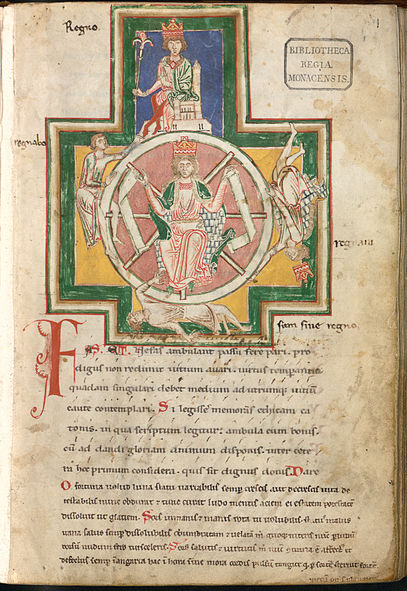 |
| Here's that wheel of fortune in the original (image from Wikipedia) |
When I was a student I loved this piece. What student wouldn't if you take a look at what it means. It is based on a collection of often bawdy but sometimes romantic poems by medieval monks, obsessed, as only monks and students can be (though in rather different ways), with drinking and sex. Musically there is nothing quite like it (certainly not Orff's two attempts to do something similar) and it contains huge contrasts in the different sections. If you have only ever heard that chorus O Fortuna it really is worth persevering and taking in some of the rest.
The thing that makes it for me is the ending of the piece, which puts it in my top three pieces of music that make the hairs on the back of your neck stand up. The last few segments portray, well, the climax of the whole business. There is a glass-cracking soprano solo as she gives her all, followed by a triumphant chorus, glorying in the outcome. But here is where the tingle factor comes in. Right at the end of this chorus, when the music seems to be coming to a dramatic climax, it turns. Something shifts and what should have been a triumphant ending suddenly opens up like a void... into a reprise of the opening chorus about the wheel of fortune turning and things always being the same. I found the implications of this rather unpleasant as a romantic youth, but you can't argue with the genius of the way those bars of music are constructed.
If all you know of Carmina Burana is the loud, blaring opening O Fortuna, here's a rather beautiful contrasting bit where the female character is deciding whether or not to go for it.

Comments
Post a Comment